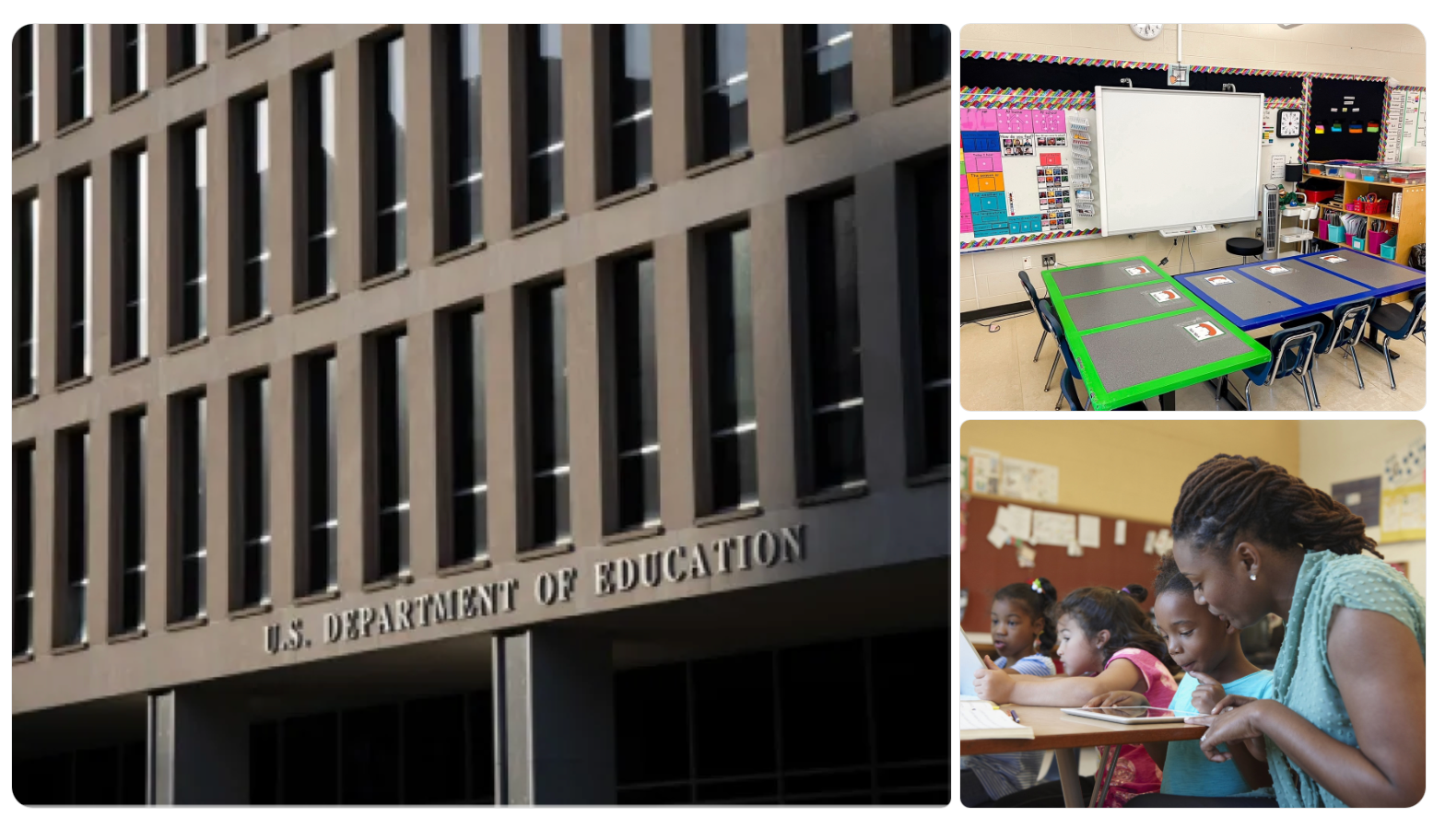Major cuts to the United States Department of Education raise urgent questions about the federal role and what educators and families can do to respond
By Gina Hill | Alaska Headline Living | October 2025
Who & What

The U.S. Department of Education (ED), the federal agency charged with oversight of federal K–12 and higher-education policy, civil rights in schools, student-aid programs and special-education enforcement, is undergoing rapid and sweeping staff reductions and role transfers under the Donald Trump administration. The Washington Post+1
- In March 2025, ED announced a reduction-in-force (RIF) affecting nearly 50% of its workforce, cutting employees from around 4,133 to about 2,183. U.S. Department of Education+1
- In October the number of layoffs increased again: approximately 466 staffers across multiple offices were slated for termination or furlough amid the federal shutdown. K-12 Dive+1
- Key offices impacted: the Office of Special Education and Rehabilitative Services (OSEP), the Office for Civil Rights (OCR), offices responsible for Title I grants, funding for rural schools, and oversight of the Individuals with Disabilities Education Act (IDEA). AP News
- President Trump signed an executive order in March 2025 instructing the Secretary of Education to “facilitate the closure of the Department … and return authority over education to the States and local communities.” The Washington Post+1
Where & When
These developments are federal, impacting schools and students across the United States, including K–12 public schools, special-education services, higher-education loan programs, and charter/private school oversight.
- The March 11 2025 announcement of the major workforce reduction. U.S. Department of Education
- The October 2025 wave of layoffs amid the government shutdown. K-12 Dive+1
- The changes take effect immediately, though full implications will play out over months (and years) as programs are scaled down, staffing gaps widen, and legal challenges proceed.
Why
According to the administration and ED leadership:
- The department is deemed “bloated” and “duplicative,” with the argument that many functions could be better handled by states or other agencies. U.S. Department of Education+1
- A broader conservative policy goal: reduce the size of the federal government, shift power to state/local control of education, and eliminate what is seen as federal overreach. Business Insider+1
- In the context of the federal shutdown and budget impasse, the cuts are being expedited and combined with reassignments of ED functions to agencies such as the U.S. Department of Labor, U.S. Department of Health and Human Services, and U.S. Department of the Treasury. Military.com+1
Why It Matters for Students and Teachers

For Students
- Special-education services: The offices that enforce IDEA and monitor states’ compliance have been gutted. For instance, one report notes the special-education office had been reduced “from nearly 200 staff to only about five.” The Guardian Without robust oversight, there is a risk that districts will delay, reduce or deny services to students with disabilities.
- Civil-rights protections in schools: With OCR staffing cut significantly, investigations into discrimination (race, disability, gender, etc.) could grind to a halt, reducing recourse for students and families. K-12 Dive
- Formula grants and support for underserved schools: Programs such as Title I, TRIO (for first-gen college students), and after-school funding are at risk of being under-managed or receiving less support. Business Insider
- Higher-education aid and loans: While the department preserves some functions (e.g., Pell Grants, FAFSA processing), major restructuring may introduce confusion and delays for student-loan borrowers and colleges. U.S. Department of Education+1
For Teachers and Educators
- Professional development and training: Grants supporting teacher quality, recruitment, and retention may be cut or paused. AP News+1
- Increased local burden: As federal oversight wanes, teachers and schools may have greater responsibility (and less support) for compliance, data reporting, and accountability measures.
- Uncertainty and destabilized policy environment: Educators must grapple with shifting priorities, possible gaps in programmatic support, and changes to funding pipelines.
What’s Next
- Ongoing legal challenges: The cuts and reassignments are being contested in court, including by teacher unions, disability-rights groups and states. For example, a federal judge temporarily blocked mass firings. K-12 Dive+1
- Legislative responses: Congress would have to authorize full dissolution of ED, something that remains unlikely without bipartisan support. The Washington Post
- States and local districts will probably see a shift in how funding, oversight and compliance operate, requiring new systems and possibly new risks of uneven service.
- Schools and families may feel immediate effects as oversight slows, program guidance becomes less available, and cuts ripple into local budgets.
How You Can Empower Yourself (and Others)
Here are concrete actions students, families, teachers and community members can take:
- Stay informed
- Monitor updates from ED, school districts and your state education agency about program changes (special ed, Title I, civil-rights complaints).
- Subscribe to newsletters from professional associations (e.g., unions, parent-advocacy groups) that track these developments.
- Know your rights
- For students with disabilities: Understand your rights under IDEA and Section 504. Even if federal oversight is threatened, these laws still apply.
- For all students: Be aware of civil-rights protections in education (discrimination, equal access, etc.). If local enforcement weakens, be ready to advocate.
- Advocate locally
- Attend school-board and district meetings to ask how they will respond to reduced federal oversight and how they’ll manage shifts in funding or compliance.
- Form or join alliances with parents, teachers and community organizations focused on equity in education.
- Contact your Congressional representatives and state legislators urging them to support robust funding and oversight of education, especially for vulnerable students.
- Support your teachers and schools
- Encourage your school to maintain transparency about funding, program changes and how it will manage any gaps.
- For teachers: collaborate with colleagues to share resources, best practices and advocacy strategies in the face of federal changes.
- For students/families: participate in parent-teacher associations or local education advocacy groups, collective voices can influence district decisions.
- Plan ahead
- For higher-education borrowers: Keep documentation of your student-loan status, income-driven repayment plans, and any correspondence from the federal government. Uncertainty at the federal level may make your individual records all the more important.
- For families of students with disabilities: Maintain your child’s IEP records, monitor district compliance and be proactive in requesting updates and supports.
- For school staff: Review how your school handles federal grants, accountability and program compliance. You may need to take a stronger role in tracking these locally.
Final Word
The current shake-up of the U.S. Department of Education is more than a bureaucratic restructuring, it has real implications for how students are supported, how teachers are empowered, and how equity is safeguarded in our schools. Whether or not the department is ultimately dissolved, the cuts underway pose a challenge to existing protections and programs that many students and educators rely upon.

But change also presents opportunity: it invites deeper engagement from local communities, more robust advocacy, and a chance to hold districts and states accountable in the absence of federal oversight. By staying alert, asserting rights, and acting together, students, families and educators can navigate this transition and help shape its outcome, rather than simply being shaped by it.




